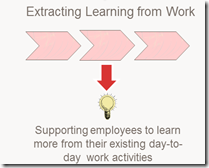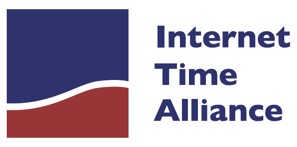 A decade ago the Corporate Executive Board published a report detailing the findings of a study into the role managers can play in employee development.
A decade ago the Corporate Executive Board published a report detailing the findings of a study into the role managers can play in employee development.
By almost any standards the sample in this study was large – 8,500 cases drawn from 14 organisations across six industries in nine countries.
One clear finding presented was that:
“those activities that are integrated into manager and employee workflow have the largest impact on employee performance, while those that are distinct events separate from the day-to-day job have less impact.”
In other words if people have the opportunity to learn and develop as part of their work and they are supported by their manager, then learning will be much better transformed into measurable behavioural change and performance improvement.
Context is Critical
Although the Corporate Executive Board study is a good one, it didn’t tell us anything new about the importance of context for effective learning. We’ve known about that for 120 years or more. Certainly since Dr Ebbinghaus’ ‘remembering’ and ‘forgetting’ experiments in the 1880s, and probably much longer.
Other studies have also produced similar results to this Corporate Executive Board work. The general finding is that the more tightly bound learning is to the workflow, the greater the impact it is likely to have.
Adding Learning to Work
 Many learning professionals and training companies have taken the lesson about the criticality of context to heart and are designing courses and programmes that link learning with work more closely than was done in the past.
Many learning professionals and training companies have taken the lesson about the criticality of context to heart and are designing courses and programmes that link learning with work more closely than was done in the past.
Although this is a great improvement from the situation where the majority of learning activities were totally separated from work, it’s only a half-way house, if that.
The thinking is still principally about adding learning into work.
Jane Hart has observed a very similar trend with her study of the uptake of social learning. She noted (see her slides 10-21 here) that there’s a clear trend towards ‘social training’ in the professional learning and development and learning vendor communities (where social technologies are added to training events) rather than towards ‘social collaboration’ (where social technologies are used to support on-going knowledge sharing and collaborative working, and integrated with workflow).
In other words, Jane has observed that many learning professionals link social technologies and activities to learning activities in order to support training outcomes – adding ‘social’ to learning – rather than facilitating and supporting social collaboration – where a social dimension is part of the workflow.
The latter is a whole new ball game for HR and learning professionals and involves extracting learning from work.
Extracting Learning from Work
 Extracting learning from work employs very different approaches to the additive form of workplace learning.
Extracting learning from work employs very different approaches to the additive form of workplace learning.
Firstly the focus is not on learning but on performance improvement from the outset.
It’s also not about requiring workers to adjust their working time and flow to include specific activities that have the explicit purpose of assisting learning.
It’s simply about developing approaches that help workers to learn more from their day-to-day work.
The impact of this latter approach is profound.
The Corporate Executive Board study found that if managers were more effective at providing workplace experiences that helped development, the impact on performance was an almost 20%1 uplift.
From this study, new and challenging workplace experiences were demonstrated to have almost three times greater impact on performance improvement than simply ensuring workers had the right knowledge and skills.
Similar results were found with the difference between ensuring that reflection occurred following the completion of a project or other piece of work, or just at regular intervals, and simply having the right knowledge and skills to do the job. there was found to be a 295% uplift in performance from reflective learning over ensuring the right knowledge and skills.
Impact on Flow and Measurement
Approaching workplace learning in this way – by supporting the extraction of learning from work rather than the injection of learning activities into work – presents a whole new set of challenges for HR, Talent and L&D professionals.
the challenges include the facts that:
-
It can’t be built into a course or programme.
-
It can’t be ‘delivered’.
-
Managers need to be enabled and supported if it is to work.
-
It can’t be managed and controlled in the way discrete training and learning injections into the workflow can be.
-
most of the learning processes are opaque to HR and L&D and can only be made explicit through observation and other field survey and data collection approaches.
Also, the flow isn’t learning > work but a different and slightly more complicated work > learning > work. This ‘binds’ the learning more tightly into the workflow and any attempt to extract it ‘collapses the wave function’ (for explanation, see here).
So traditional attempts to ‘isolate’ the impact of learning becomes very difficult and we need to adopt more holistic types of analysis to determine what works and what doesn’t.
And it changes viable measurement approaches as well. The focus can no longer be on learning and learning metrics, but on performance and performance metrics. If we can’t measure intermediate steps (the ‘learning’) then we must focus on measuring the output (performance in the workplace) only. This is another new ball game for which HR and L&D must learn the rules (and there are rules).
New Opportunities
On the positive side, the ‘extracting learning’ approach opens up a new area of opportunity for L&D – beyond the module, course and programme and into the daily workflow as a mechanism for effective development, increased performance and greater productivity.
It’s there for the taking if we want.
—————————–
1 This figure is arrived at as a statistical estimate of the maximum impact on performance calculated by measuring predicted differences in employee performance between direct reports who rate their managers as least effective and those that rate their managers as most effective at supporting rich workplace experiences – such as challenging projects, stretch assignments, new project work etc.
#itashare

 ConsultMember of the Internet Time Alliance and Co-founder of the 70:20:10 Institute, Charles Jennings is a leading thinker and practitioner in learning, development and performance.
ConsultMember of the Internet Time Alliance and Co-founder of the 70:20:10 Institute, Charles Jennings is a leading thinker and practitioner in learning, development and performance.
Charles, you’re right that learning is most effective when it is part of work and I like your clarity in describing this as extracting learning from work. In the past this was difficult, now with technology and other systems it’s easier. One question for you Charles, in this process what do you see is the role for L&D professionals and what is the role for managers?
Ara, I see important roles for both line managers and L&D professionals in workplace learning, but generally very different roles and work to that which most have and do today.
Managers are without doubt best placed to encourage, support and ensure workplace learning is occurring as well as it possibly can be. there's an argument that a manager's primary role is to develop and guide her team.
The majority of managers need to hone their skills as people developers and then work to build and support a culture of continuous development in their teams. However, they will almost inevitably need new tools, techniques and skills to help them do this part of their job. Toolsets are changing and improving all the time. Organisations and managers need to keep up.
This is where one aspect of L&D professionals' work lies. They need to work closely with line managers and their HR colleagues, to equip and support managers to do their jobs. This includes provision of the right tools as well as providing coaching and performance consulting.
L&D professionals also need to act as incubators of innovation for development – testing and experimenting with new approaches and technologies and recommending and testing incremental improvements.
There are some practical and straightforward actions L&D can take – templates to support managers to encourage team reflection; collaboration environments and tools to support work narration and sharing of new learning; facilitation of team feedback and storytelling sessions to help make tacit knowledge explicit and shared … and many others.
It's a long way from designing and delivering content, but the evidence suggests that it provides greater value!
Charles
Ara, I'm no Charles, but I guess that the managers should still be the managers… The L&D team should, in my opinion, support the managers in performance measuring and analysis. Together with the managers the L&D can do an inventory of what the common mistakes and obstacles are for the employees and maybe lift these up "for viewing". Make them noted and concious so that the employees can reflect and come up with solutions. Maybe foster discussions and workshops etc for sharing these within the organization.
Looking forward to Charles' answers!
Hi Charles,
Two questions:
If changes in performance are multi-determined (learning, improved job conditions, better management) then how can you measure learning as a separate factor?
Can L&D provide models/schemas that people can utilize to give context to what they learn through work?
Adam
Good questions Adam 🙂
Trying to isolate the specific contribution of the learning element as a separate factor often sets us up to chase windmills. In some circumstances the impact of the separate inputs can be isolated, mostly they can't. Real life.
It's a little like trying to determine the specific ingredient that makes a great dish rather than just 'good nosh'. Sometimes it may be a special ingredient, other times it's the way the parts are put together by the chef, still others it is just the ambience or location where it's eaten. It may sometimes be possible, but not often worth the effort, to isolate the impact of each input.
In my view a better approach for those of us who contribute the learning ingredients is to agree at the outset with the other stakeholders what 'success' will look like, and also agree how to measure the performance improvement (i.e. measure the outputs rather than the inputs). At the same time agree that it's a team effort. If success ensues, then everyone takes credit for their input.
Not a perfect solution, but I find it is a practical one.
Regarding the second question, the context comes through the work itself. There are certainly tools/approaches/models that can assist the 'extraction' of learning from work – such as providing structures and processes to support reflective practice, or facilitating storytelling and work narration. I see these things as a very important part of L&D's job. If L&D professionals don't do them, someone else will step up.
Incidentally, I've further developed this work. There is an additional perspective, that of EMBEDDING learning in work. this is exemplified in performance support tools and systems amongst other support approaches.